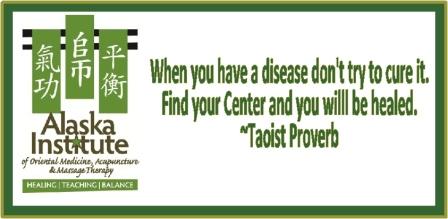ASD and Art: An Invitation to Massage Therapists
Shakti Gawain said: “Our bodies communicate clearly and
specifically if we are willing to listen.”
Such is the case when we consider treatment options in
bodywork: small changes in approach can yield great results when applied
correctly, and opportunities to “listen” for when these changes are appropriate
are discussed widely among practitioners.
Regardless of the methods applied, hours – perhaps more –
have been spent prior to treatment inspired by the clients we serve in Alaska.
The allure of emerald lakes and mountain rainbows can lead to sore back muscles.
Late nights in the city and Northern Lights viewing can strain necks and
shoulders. A long day at work can inspire the therapist to develop new
strategies for stress relief.
Massage Therapy has proven to be a successful
intervention with a wide array of health concerns. Autism Spectral Disorder
offers the massage therapist a unique opportunity. With a myriad of resources
available relating to this disorder, an additional resource can be explored
through art. The primary purpose of this blog post is to draw you into the
experience of autism on the “Art of Autism” website as an entry into this unique genre of expression. A nice perk is that art such as this may help
guide the massage therapist to better understand this disorder when considering
a treatment plan.
Quick Facts:
·
ASD effects social skills and the ability to
communicate
·
1:54 children are identified to have ASD in the
US as of 2020
·
Diagnosis can be obtained early in life; testing
of certain benchmarks is part of a standard pediatric care plan
·
There is no universal “cure.” Pharmaceutical
treatments exist. Certain care plans include the coordination of several
providers
·
~ 5,500,000 American adults have been diagnosed
with ASD
·
Some people experiencing ASD find physical touch
difficult.
· Causes, treatments and social perceptions of ASD vary widely with audiences.
Care for young children experiencing ASD can include any of
the following medical interventions:
·
Psychiatric
·
Occupational Health
·
Speech- Language Pathology
·
Primary Care Providers
·
Dietary Specialists
·
Caregivers/ Educators
Most children experiencing ASD are not under this
comprehensive of treatment, however. Coordinating with other providers may
leverage their knowledge of your client.
Adults experiencing ASD also have diverse interventions, but may struggle to lead productive, healthy lives. Education level, unemployment and a lack of social interaction make coordinating care a challenge.
Consider the Following Potential Benefits of MT:
·
Positive social interaction
·
Anxiety relief
·
Increased circulation
·
Supports further coordination with other
providers
The massage therapist should be aware of the wonderful
challenge presented by working with those experiencing ASD. While not
contraindicated, MT can be very intense, and the massage therapist should have
a plan in place keep the client safe.
How does one go about understanding ASD?
"Western" perspective: ASD is a developmental
disorder. Communication is fundamental to this disorder. Each case is unique.
The transition from childhood to adulthood presents the most critical
(typically) phase of intervention.
TCM: ASD does not exist by this
clinical designation but is described under the name: “Syndrome of 5 delays”.
Speech is one marker used in the diagnosis of this syndrome.
The massage therapist looking for new methods of understanding ASD will find that the autist community excels in this very task – new methods of understanding. Nowhere is this more evident than in the writing and painting of those on the “Art of Autism” website. Consider Patrick Jasper Lee on www.art-of-autism.com. Lee shares his experience and gives an account of ASD that is really fun to follow. I use his art to better understand autism and my role in caring for an ASD client.
The blog site “Art of Autism” is a collection of paintings, poems, books, and photos. Very few disorders have a “symbol” attached to it. The puzzle piece seems fitting here (where it may not be fitting elsewhere): “solving the puzzle” seems impossible - until the piece itself shows you where it fits.
References
Art of Autism. (2020, June 26). Patrick Jasper
Lee. Retrieved from https://the-art-of-autism.com/tag/patrick-jasper-lee/
Centers for Disease Control. (2020, June 26). Autism
Spectrum Disorder. Retrieved from
https://www.cdc.gov/ncbddd/autism/index.html
NIH. (2020, June 26). Autism Spectrum Disorder.
Retrieved from https://www.nimh.nih.gov/health/topics/autism-spectrum-disorders-asd/index.shtml
Science, P. C. (2020, June 26). Traditional
Chinese Medicine and Autism. Retrieved from
https://www.pacificcollege.edu/news/blog/2014/10/17/traditional-chinese-medicine-and-autism
Trumpet Behavioral Health. (2020, June 26).
Retrieved from
https://tbh.com/blog/aba-therapy/the-importance-of-coordinated-autism-care/




